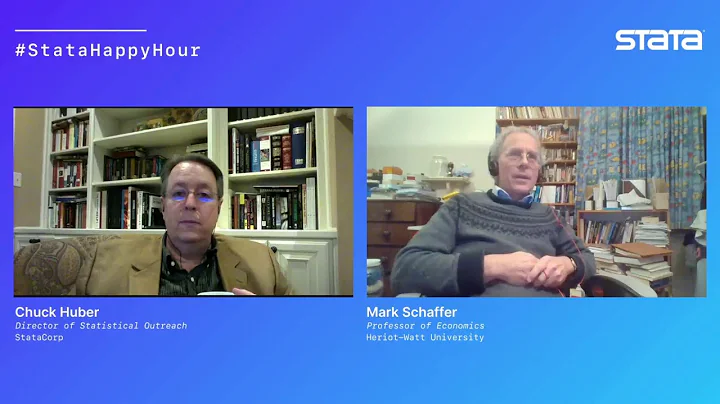Mark D Schaffer
age ~57
from Allentown, PA
Mark Schaffer Phones & Addresses
- 508 W Washington St, Allentown, PA 18102
- Bristol, VA
- Columbus, GA
Lawyers & Attorneys

Mark Schaffer - Lawyer
view sourceOffice:
Rappaport & Schaffer
Specialties:
Personal Injury Law
Criminal Law
General Litigation
Criminal Defense
General Practice
Criminal Law
General Litigation
Criminal Defense
General Practice
ISLN:
904003916
Admitted:
1967
University:
Temple University, B.S.
Law School:
Temple University, LL.B.

Mark Schaffer - Lawyer
view sourceOffice:
Ashcraft & Gerel, LLP
Specialties:
Workers Compensation
ISLN:
904003909
Admitted:
1972
University:
Boston University, A.B., 1967
Law School:
Georgetown University Law Center, J.D., 1972
Us Patents
-
Method And Apparatus For The Recovery Of Molybdenum From Spent Catalysts
view source -
US Patent:7854908, Dec 21, 2010
-
Filed:Aug 20, 2008
-
Appl. No.:12/195042
-
Inventors:James G. Hnat - Collegeville PA, US
Mark A. Schaffer - Trappe PA, US -
International Classification:C01G 37/00
-
US Classification:423 59, 423606
-
Abstract:This invention relates to an apparatus and process that utilizes high-temperature oxidation and sublimation techniques for the recovery of molybdenum from spent catalysts or other feedstocks that contain molybdenum. A preferred embodiment uses a counter-rotating vortex reactor and a cyclonic entrained-flow reactor to rapidly heat and oxidize the spent catalyst feedstock, such as carbon, sulfur, and molybdenum compounds, at temperatures in the range of about 2100 F. to 2900 F. , resulting in a gas-solid stream containing molybdenum trioxide vapor. A high-temperature cyclone separator is utilized to separate the residue from this stream before this stream is rapidly quenched to a temperature sufficient to effect the condensation of solid molybdenum trioxide without condensing arsenic or phosphoric oxides. The condensed molybdenum trioxide material is separated from this stream by passing through a high-temperature filtration system. The remaining gaseous stream is then ducted to suitable unit operations for possible further material reclamation and entailed pollution control prior to its final discharge to the atmosphere.
-
Methods For The Concentration Of Vanadium From Carbonaceous Feedstock Materials
view source -
US Patent:8277766, Oct 2, 2012
-
Filed:Dec 27, 2010
-
Appl. No.:12/978686
-
Inventors:James G. Hnat - Collegeville PA, US
Mark A. Schaffer - Trappe PA, US -
International Classification:C22B 34/00
-
US Classification:423 62, 423 64, 75622
-
Abstract:This invention relates to a process that utilizes high-temperature oxidation with controlled stoichiometry in the concentration of vanadium from carbonaceous feedstock materials containing vanadium, such as residues, ashes and soots resulting from the combustion or gasification of petroleum vacuum residuum, petroleum coke, kerogen from oil shale, and bituminous sand, e. g. , tar sand or oil sand, or extra heavy oil or other carbonaceous feedstocks that contain vanadium. A preferred embodiment uses a counter-rotating vortex reactor and a cyclonic, entrained-flow reactor to rapidly heat and oxidize feedstock at temperatures in the range of about 2100 F. to 2900 F. , resulting in a vapor stream with entrained, solid materials comprising the concentrated vanadium species. The entrained, vanadium-rich product solids may be removed from the high-temperature vapor stream by a high-temperature filter assembly, with or without the aid of a high-temperature cyclone separator which removes a portion of the vanadium-rich solids upstream of the filter. The filtered vapor stream may be stored or then ducted to suitable unit operations for possible oxidation and heat recovery, followed by entailed pollution control prior to its final discharge to the atmosphere.
Resumes

Salesman
view sourceLocation:
Allentown, PA
Work:
Allentown Appliance
Salesman
Salesman
Education:
Louis E Dieruff High School

Mark Schaffer
view source
Mark Schaffer
view source
Mark Schaffer
view source
Mark Schaffer
view source
Mark Schaffer
view source
Mark Schaffer
view source
Mark Schaffer
view sourceWork:
La Tranquera Limited
Principal
La Tranquera Limited
Partner-Javier Santiago Torres and Gorriceta Law Offices
Principal
La Tranquera Limited
Partner-Javier Santiago Torres and Gorriceta Law Offices
Name / Title
Company / Classification
Phones & Addresses
Executive Director
Advanced Fibers & Powders
Engineering Services
Engineering Services
3770 Ridge Pike, Collegeville, PA 19426
Website: environmentalstewards.com
Website: environmentalstewards.com
Executive Director
Advanced Fibers & Powders
Engineering Svcs
Engineering Svcs
3770 Rdg Pike STE 1, Collegeville, PA 19426
6104892590, 6104893185
6104892590, 6104893185
3 RATES RENTAL, LLC
License Records
Mark W Schaffer
License #:
359 - Expired
Category:
Asbestos
Issued Date:
Jun 4, 1998
Effective Date:
Jul 26, 2004
Expiration Date:
Jun 4, 1999
Type:
Asbestos Inspector
Mark W Schaffer
License #:
626 - Expired
Category:
Asbestos
Issued Date:
Sep 13, 1995
Effective Date:
Jul 26, 2004
Expiration Date:
Sep 13, 1996
Type:
Asbestos Management Planner
Googleplus

Mark Schaffer
Education:
North Carolina State University - Materials Science and Engineering
About:
Traveling photographic comic genius.

Mark Schaffer
Education:
University of Illinois at Urbana-Champaign - Aerospace Engineering

Mark Schaffer
Education:
Fulton County High School, Hickman, KY
Tagline:
I love to meet people and make friends

Mark Schaffer
Education:
Covington latin school, Holy Cross

Mark Schaffer

Mark Schaffer

Mark Schaffer

Mark Schaffer
Myspace

Mark Schaffer
view source
Pwee Mark Schaffer
view source
Mark Schaffer
view source
Mark Schaffer
view source
Mark Schaffer
view sourceYoutube
Plaxo

Mark Schaffer
view sourcePflugerville, TexasPrincipal Consultant/Owner at Schaffer Environment... Environmental Consultant providing leading EPEAT/Green Procurement services for the electronics industry. End-of-Life, Eco-labels, Sustainability, GHG/Carbon... Environmental Consultant providing leading EPEAT/Green Procurement services for the electronics industry. End-of-Life, Eco-labels, Sustainability, GHG/Carbon accounting and LCA expertise as well.

Mark Schaffer
view sourceLondon

Mark Steven Schaffer
view sourceLas Vegas, NV
News

NASA plans to put astronauts going to Mars in deep sleep. Why?
view source- been a staple for critical care trauma patients in hospitals. Protocols exist in most major medical centers for inducing therapeutic hypothermia on patients to essentially keep them alive until they can get the kind of treatment that they need," explained Mark Schaffer, a SpaceWorks aerospace engineer.
- Date: Oct 07, 2014
- Source: Google

NASA Is Considering A Deep Sleep Option for Mars Mission Crew
view source- "Therapeutic torpor has been around in theory since the 1980s and really since 2003 has been a staple for critical care trauma patients in hospitals," aerospace engineer Mark Schaffer, with SpaceWorks Enterprises in Atlanta, said at the International Astronomical Congress in Toronto this week. "Prot
- Date: Oct 07, 2014
- Category: Sci/Tech
- Source: Google

NASA looking at induced hibernation for travel to Mars
view source- However, according to Mark Schaffer, an aerospace engineer for SpaceWorks Enterprises who are collaborating with NASA on the project, astronauts will need to go through a much longer stasis period: For human Mars missions, we need to push that to 90 days, 180 days. Those are the types of mission fl
- Date: Oct 07, 2014
- Source: Google

NASA looking to put Astronauts in Hibernation on Their Way to Mars
view source- "Protocols exist in the most major medical centers for inducing therapeutic hypothermia on patients to essentially keep them alive until they can get the kind of treatment that they need", aerospace engineer Mark Schaffer of SpaceWorks Enterprises told the International Astronomical Congress in Toro
- Date: Oct 07, 2014
- Category: Sci/Tech
- Source: Google

NASA Considers Hibernation a Viable Option for Mars Missions
view source- During the International Astronomical Congress earlier this week, aerospace engineer Mark Schaffer at SpaceWorks Enterprises in Atlanta, said that NASA is exploring the option of putting the astronauts into deep sleep on their way to Mars. The solution is currently used in hospitals.
- Date: Oct 07, 2014
- Category: Sci/Tech
- Source: Google

NASA and SpaceWorks planning to Put Astronauts in Hibernation while ...
view source- Mark Schaffer, a SpaceWorks aerospace engineer, explained that the therapeutic torpor has been theoretically known since the 1980s, but has become a staple for critical care trauma patients in hospitals since 2003.
- Date: Oct 07, 2014
- Category: Sci/Tech
- Source: Google

Deep Sleep Mission To Mars?
view source- We havent had the need to keep someone in (therapeutic torpor) for longer than seven days, Mark Schaffer, aerospace engineer for SpaceWorks Enterprises said at the International Astronomical Congress in Toronto last week. For human Mars missions, we need to push that to 90 days, 180 days. Those
- Date: Oct 07, 2014
- Source: Google

Crews make gains on Ariz. wildfires
view source- That was posing a new problem. Mark Schaffer, director of communications for the Arizona Department of Environmental Quality, said because the fire had dropped down low and the winds subsided, smoke had become "very hazardous."
- Date: Jun 11, 2011
- Category: U.S.
- Source: Google
Get Report for Mark D Schaffer from Allentown, PA, age ~57






